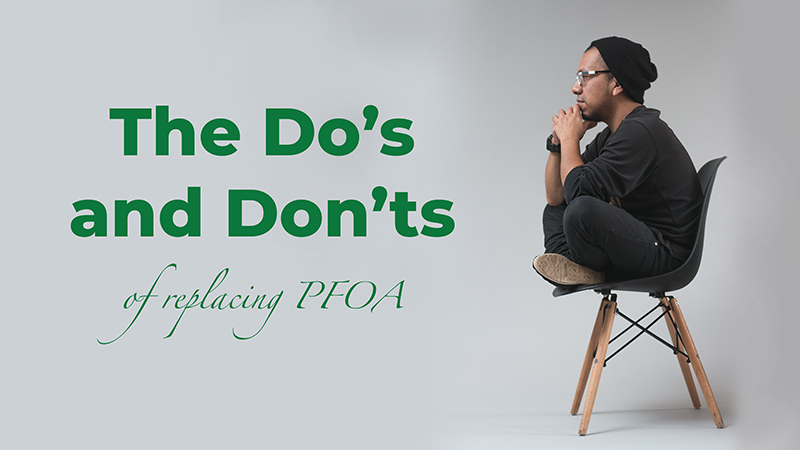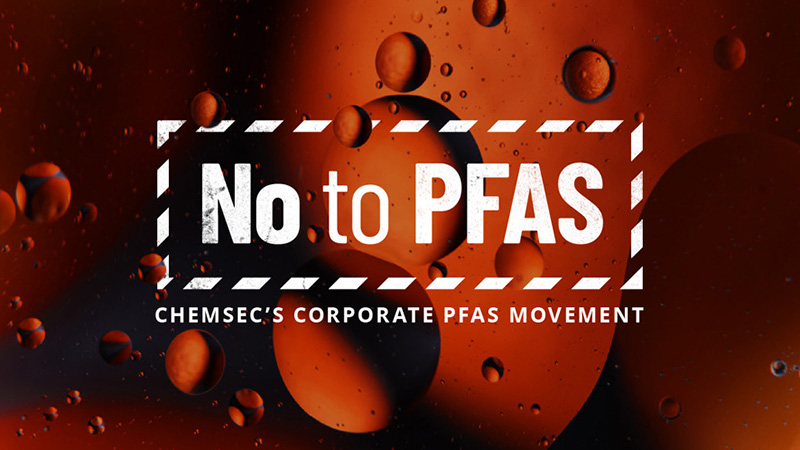If PFAS are so bad, why aren’t they regulated?
By Dr. Anna Lennquist
Per- and polyfluoroalkyl substances. That’s the non-abbreviated name for PFAS, a group of industrially produced chemicals with an increasing level of concern surrounding them. In manufacturing, PFAS are favoured for their durability and well-functioning properties; they provide properties such as non-stick, water repellence, anti-grease or similar, to many types of products including cosmetics, frying pans, outdoor gear and firefighting foam.
There’s no denying that PFAS do the job they are intended for really well. In fact, PFAS work so well, and have been used to such an extent that almost every person in the world has measurable levels of PFAS chemicals in their blood.
Lately, more and more reports have been suggesting that it is a serious problem. Human epidemiological studies have found associations between PFAS exposure and a number of health disorders including kidney cancer, lowered birth weights and effects on the immune system.
Other studies show that PFAS are widely present in the environment and that 3% of the population in the US and in Sweden are exposed to above proposed limit values via drinking water. The mounting evidence against PFAS have now surpassed the sole awareness of the scientific community, and today many regular citizens are aware of this problematic group of chemicals.
This begs the question: If PFAS are that bad, how on earth can they still be allowed?
I´d say that there are several answers to this question. The most obvious being that regulation of many chemicals to date has been a hard-fought victory against a well-funded industry, lobbying to keep substances on the market (I’m mainly writing from an EU perspective, but the same goes for the US).
“If PFAS are that bad, how on earth can they still be allowed?”
To put it blunt: There’s a lot of money in PFAS.
In addition to this, current legislation makes it very hard to regulate chemicals on a group basis. PFAS are not one single chemical, the PFAS group covers more than 4,700 substances.
In the 1980s, two of the substances – PFOA and PFOS – were found to be toxic and some countries have enforced limits to use them. However, as chemicals are regulated one-by-one, it has been possible to keep manufacturing all kinds of molecular varieties of these chemicals to replace PFOA and PFOS.
The pattern of escaping regulation by shifting to a less studied – but still toxic – cousin is not unique for PFAS. Varieties of toxic chemicals such as halogenated flame retardants, bisphenols and phthalates have all eluded legislation in the same manner.
For this reason, more and more stakeholders are asking for solutions to regulate chemicals on a group level. One current initiative is an EU restriction that in practice will cover a group of about 200 PFAS chemicals. The restriction will be rolled out in steps between 2020 and 2023. It holds a number of exemptions, but it’s a good start.
“For a substance to be covered by regulatory criteria, being persistent is not enough”
The last reason why PFAS aren’t yet regulated relates to how the toxicity of chemicals, or the hazardous properties, is dealt with in a policy context.
The main and common problematic property for all PFAS is that they do not degrade. They are extremely persistent and can remain in nature for hundreds – or even thousands – of years.
Water can transport PFAS and, unwillingly, humans, birds and fishes also help transport these chemicals to remote places, far from any regular human activity. That’s why, for example, polar bears have been found with PFAS in their blood streams.
But for a substance to be covered by regulatory criteria, being persistent is not enough. The persistence needs to be accompanied with proof that the substance is taken up by organisms (bioaccumulative) and preferably also that it causes harm (is toxic). There are some methodological challenges in proving bioaccumulation, and to prove toxicity requires much evidence from animal testing.
Arguments are being raised that this regulatory gap needs attention, and that it should be possible to address very persistent chemicals only on the basis of them being persistent. In this argumentation PFAS is the main example.
The argumentation is built on the fact that the release of persistent chemicals into the environment can never be reversed. If science finds a persistent chemical safe from a toxic standpoint today, and later turns out to be wrong (which has happened countless times in the past), it will be too late. Aggregating levels of persistent chemicals will most likely, at some point in time, reach concentrations that will cause problems.
From my standpoint, it is an absolute no-brainer that PFAS should be addressed with regulatory urgency. And if you don’t think that the health and environmental concerns connected to PFAS are enough, then I have something for you too. Recently the Nordic Council of Ministers published a comprehensive study that estimates the societal costs for not regulating PFAS. The costs relate to health impacts of workers and the general population following PFAS exposure, but also to costs for cleaning up contaminated soil and water. It is not a shy sum. We are talking about billions of Euros.
The bitter irony of it all is that in many cases PFAS chemicals can be replaced by safer alternatives. It is probably not possible to find one solution to replace all PFAS in all applications. Instead, one needs to consider the specific application and the concrete need. Do you really need a jacket manufactured for polar expeditions for a walk between the bus and the office? Or would a safer alternative providing slightly less water resistance do just fine?
If you agree with me, a good way for you to start taking action is by being mindful. Simply ask if the jacket, the hamburger wrapping or the frying pan contains PFAS the next time you shop.

Dr. Anna Lennquist
Senior Toxicologist at ChemSec






